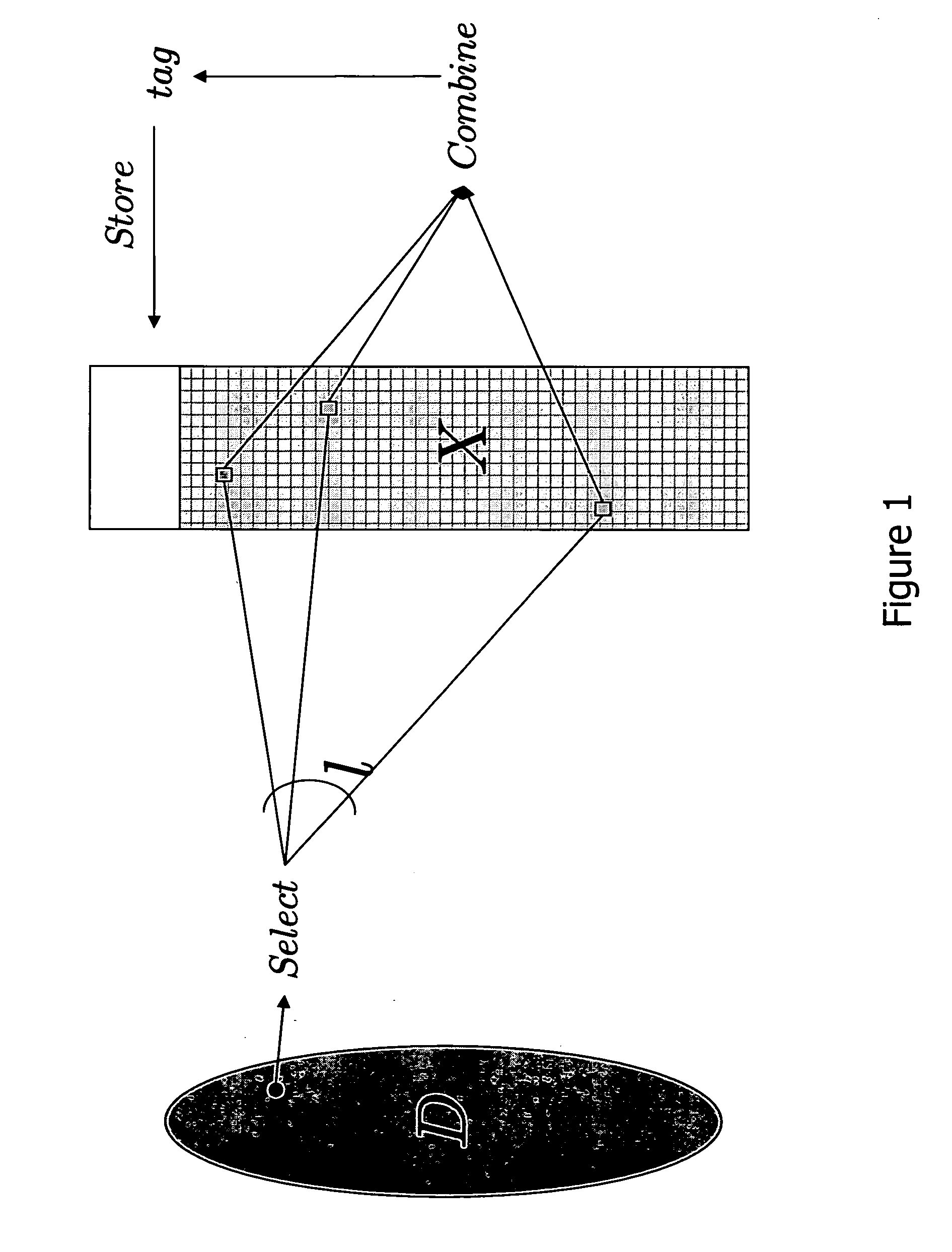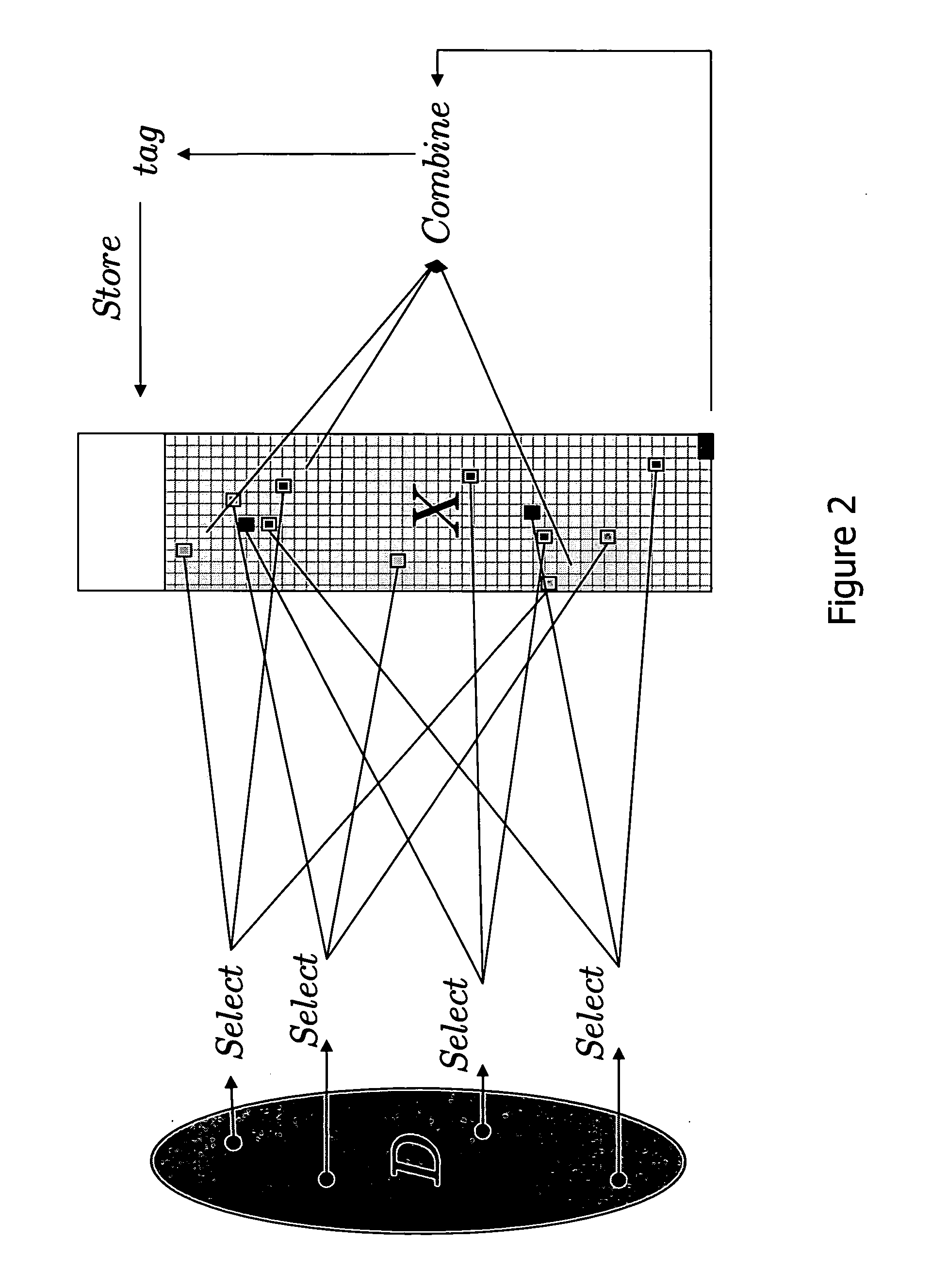[0007] Despite their often noticed weaknesses, password protocols remain the most widely used method for authenticating
computer users. In traditional password schemes (such as the scheme used for the widely-used
UNIX computer
operating system), a computer user (hereinafter referred as the user) wants to authenticate herself to a computer server (hereinafter referred as the server) to login into her computer account. Such schemes can be divided into a registration phase and a verification phase. In the registration phase, the server stores the output returned by a mathematical function with some special properties computed using as input a given user password in a single
record of a password
database, often called the “password file”. The function used has to be efficiently computable but hard to invert in a feasible computation time; such functions are called “one-way functions” and are ubiquitously used in the
cryptography literature. In order to verify a user login attempt, the server simply computes the same one-way function on a putative password supplied by the user attempting to login, and compares it to the stored value in the password
database. If the values match, the user is allowed to log in. An adversary trying to impersonate an authorized user can always try a so-called “online
attack”, which comprises repeatedly trying the user
login name with a new password, until the right password is guessed. However, if the user password is chosen with enough randomness, each attempt in the online
attack is extremely unlikely to succeed, and current servers are programmed to prevent users from continuing their
authentication session after just a few unsuccessful attempts. Unfortunately, the password database itself is typically rather small, and can be quickly and easily retrieved by any adversary capable of intruding into the server memory by, e.g., exploiting
software bugs. Although the password database does not directly contain any of the user passwords, it opens up the possibility of a so-called “offline
dictionary attack” to the adversary. In such an attack, the adversary can utilize the information contained in any single
record of the password database by attempting to apply the one-way function to every word in a dictionary in the hopes that it will match the content of that
record due to the user's tendency to utilize a dictionary word as a password. Although too large to be efficiently searched by a human, dictionaries are typically small enough so that they are efficiently searchable by a computer, thus making this offline
dictionary attack quite feasible.
[0008] The present invention provides a design scheme so that an adversary is required to access a very large quantity of data when trying to carry out these attacks. Due to technology advances, computer storage is a static, inexpensive resource, which is readily available today, such that a server can easily provide huge quantities of storage. External bandwidth is a time-dependent resource and is certainly much less available than storage. Furthermore, the bandwidth available to a remote or internal attacker may be easily controlled by physical means, or even by monitoring traffic at the server'
s interface to the outside world. By using this gap between server storage capacity and the adversary's ability to retrieve stored data, it is possible to realize a significant server security
advantage over the adversary, thus making even an off-line dictionary attack just slightly more powerful than the practically unsuccessful online attack.
[0012] The solution uses a non-trivial combination of mathematical tools, called dispersers and pairwise-independent hash functions, which have never been used before for password protocols. Dispersers make sure that the password of each user depends on “well-dispersed” (or, in other words, random-looking) locations in the large password file. Pairwise-independent hash functions help in making this dependency random enough.
 Login to View More
Login to View More  Login to View More
Login to View More 


